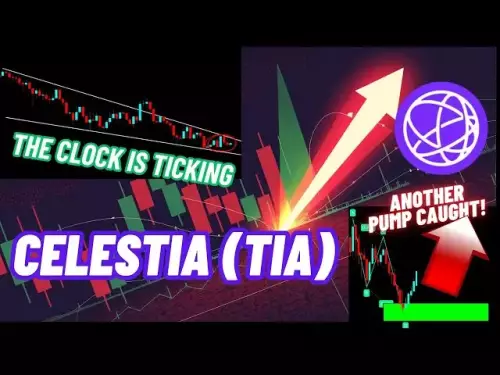-
 Bitcoin
Bitcoin $109000
0.55% -
 Ethereum
Ethereum $4390
-1.61% -
 Tether USDt
Tether USDt $0.0000
0.00% -
 XRP
XRP $2.762
-1.81% -
 BNB
BNB $851.9
-0.99% -
 Solana
Solana $199.7
-1.74% -
 USDC
USDC $0.9999
0.02% -
 Dogecoin
Dogecoin $0.2149
-1.20% -
 TRON
TRON $0.3377
-1.47% -
 Cardano
Cardano $0.8110
-1.42% -
 Chainlink
Chainlink $22.89
-3.59% -
 Hyperliquid
Hyperliquid $44.62
0.50% -
 Ethena USDe
Ethena USDe $1.001
0.00% -
 Sui
Sui $3.239
-1.73% -
 Stellar
Stellar $0.3536
-1.33% -
 Bitcoin Cash
Bitcoin Cash $545.6
-0.35% -
 Avalanche
Avalanche $23.89
-0.45% -
 Cronos
Cronos $0.2741
-4.30% -
 Hedera
Hedera $0.2156
-3.64% -
 UNUS SED LEO
UNUS SED LEO $9.582
0.00% -
 Litecoin
Litecoin $109.7
-0.67% -
 Toncoin
Toncoin $3.113
-1.17% -
 Shiba Inu
Shiba Inu $0.00001216
-1.53% -
 World Liberty Financial
World Liberty Financial $0.2597
13.60% -
 Polkadot
Polkadot $3.749
-1.27% -
 Uniswap
Uniswap $9.444
-3.56% -
 Dai
Dai $0.9999
0.01% -
 Bitget Token
Bitget Token $4.659
2.24% -
 Monero
Monero $265.0
1.82% -
 Aave
Aave $309.3
-2.93%
When the KDJ's J value falls below 0 and then turns upward, is this a definite buying opportunity?
The KDJ's J line below 0 signals oversold conditions in crypto, but confirmation from volume, trend, and price structure is crucial before acting.
Sep 01, 2025 at 09:54 am

Understanding the KDJ Indicator in Crypto Trading
1. The KDJ indicator is a momentum oscillator widely used in cryptocurrency trading to identify overbought and oversold conditions. It consists of three lines: K, D, and J. The J line, known for its volatility, reflects the divergence between the K and D lines and often acts as an early signal for potential reversals. Traders monitor the J line closely, especially when it drops below 0, as it may suggest extreme market pessimism.
2. When the J value falls below 0, it typically indicates that the asset has been heavily sold off, potentially reaching an oversold state. A subsequent upward turn of the J line from this level is seen by some traders as a sign that selling pressure is weakening and a bullish reversal may be imminent. However, this movement alone does not guarantee a sustained price recovery.
3. The crypto market’s high volatility means that technical signals like the KDJ can generate false positives. For example, during strong downtrends, the J line may briefly rise from below 0 only to plunge again as the downward momentum resumes. Relying solely on this signal without confirmation from other indicators or price action analysis can lead to premature entries and losses.
4. Volume analysis is essential when interpreting the J line’s rebound. A genuine reversal signal is often accompanied by a noticeable increase in trading volume, indicating renewed buying interest. Without volume support, the upward turn of the J line may reflect short-term noise rather than a meaningful shift in market sentiment.
5. Timeframe selection also plays a crucial role. On shorter timeframes such as 15-minute or 1-hour charts, the J line may dip below 0 and reverse frequently due to market noise. These signals are less reliable compared to those appearing on daily or weekly charts, where the context reflects broader market trends and stronger institutional participation.
Why the J Line Below 0 Isn’t a Guaranteed Buy Signal
1. The KDJ indicator is inherently lagging, meaning it reacts to price movements rather than predicting them. When the J line rises from below 0, the price may have already started recovering, leading to delayed entries. In fast-moving crypto markets, timing is critical, and late entries increase exposure to potential pullbacks.
2. Market context determines the reliability of technical signals. During bear markets or periods of negative macroeconomic sentiment, oversold conditions can persist for extended periods. Assets may remain oversold for days or weeks, making it risky to assume that a J line reversal automatically translates into upward price action.
3. Altcoins and low-cap tokens are especially prone to manipulation and sudden volatility. Whales can trigger artificial sell-offs that push the J line below 0, only to reverse sharply afterward. These movements may trap retail traders who interpret the signal as a safe buying opportunity without considering the broader order book dynamics.
4. The KDJ settings, typically (9,3,3), may not be optimal for all cryptocurrencies. High-volatility assets like meme coins might require adjusted parameters to reduce noise. Using default settings across all assets can result in misleading signals, especially when the J line fluctuates rapidly around extreme levels.
Combining KDJ with Other Analytical Tools
1. Integrating the KDJ with trend-following indicators such as moving averages or the ADX helps filter out false signals. For example, a J line rebound from below 0 is more credible when it occurs above the 200-day moving average, suggesting alignment with the prevailing uptrend.
2. Support and resistance levels provide valuable context. If the price is approaching a strong historical support zone while the J line turns upward from below 0, the confluence increases the probability of a successful bounce. Ignoring price structure reduces the effectiveness of oscillator signals.
3. Divergence analysis enhances signal accuracy. A bullish divergence occurs when the price makes a lower low, but the KDJ (particularly the J line) forms a higher low. This mismatch suggests weakening downward momentum and strengthens the case for a potential reversal, especially when combined with a rising J line from below 0.
4. On-chain metrics such as exchange outflows, active addresses, and whale accumulation patterns can validate technical signals. A J line reversal accompanied by increased wallet activity and reduced selling pressure on exchanges adds credibility to the potential for a bullish move.
Frequently Asked Questions
What does a J value below 0 indicate in the KDJ indicator?A J value below 0 suggests that the market is in an oversold condition, reflecting strong selling pressure. It often occurs after sharp price declines and may signal exhaustion among sellers, but it does not confirm an immediate price rebound.
Can the KDJ indicator be used effectively in sideways crypto markets?Yes, the KDJ performs well in ranging markets where price oscillates between defined support and resistance levels. In such environments, the J line’s swings above 100 and below 0 can help identify short-term reversal points, especially when combined with horizontal price boundaries.
How should traders adjust KDJ settings for different cryptocurrencies?Traders may need to modify the KDJ’s period settings based on volatility. For highly volatile assets, increasing the smoothing periods (e.g., 14,3,3) can reduce false signals. Backtesting on historical data helps determine optimal parameters for specific coins.
Is the J line more reliable on higher timeframes?Yes, signals on daily or weekly charts tend to be more reliable due to reduced noise and stronger alignment with macro trends. Short-term fluctuations on lower timeframes can distort the J line, making it less dependable for long-term trading decisions.
Disclaimer:info@kdj.com
The information provided is not trading advice. kdj.com does not assume any responsibility for any investments made based on the information provided in this article. Cryptocurrencies are highly volatile and it is highly recommended that you invest with caution after thorough research!
If you believe that the content used on this website infringes your copyright, please contact us immediately (info@kdj.com) and we will delete it promptly.
- Memecoins September 2025 Watchlist: What's Hot Now?
- 2025-08-31 23:25:15
- Eric Trump Predicts Bitcoin to $1 Million: Hype or Reality?
- 2025-08-31 23:25:15
- BlockDAG: Redefining Scalability and ROI Potential in 2025
- 2025-08-31 23:05:16
- Ozak AI, Altcoins, and 20x Potential: Navigating the Crypto Landscape
- 2025-09-01 00:05:12
- Bonk Price, Solana Meme Coin, and the Rise of Layer Brett: A New Era?
- 2025-08-31 21:25:12
- ETH Transactions Soar, BTC Whale Shifts Gears: Decoding August's Crypto Charts
- 2025-08-31 21:05:16
Related knowledge

The VRSI indicator has entered the overbought zone, but the price is still hitting new highs. What is the risk?
Aug 31,2025 at 07:36pm
Understanding the VRSI Indicator in Overbought Conditions1. The Volume-Weighted Relative Strength Index (VRSI) combines price momentum with trading vo...
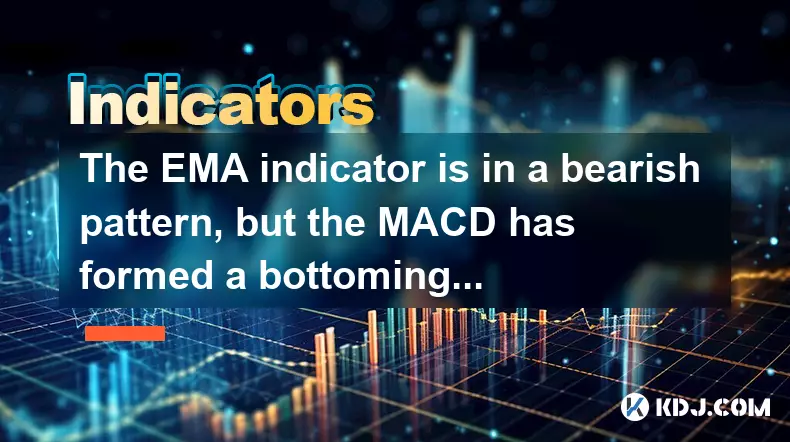
The EMA indicator is in a bearish pattern, but the MACD has formed a bottoming divergence. How should I choose?
Aug 30,2025 at 02:19pm
Bearish EMA vs. Bullish MACD Divergence: Understanding the Conflict1. The Exponential Moving Average (EMA) is a trend-following indicator that gives m...
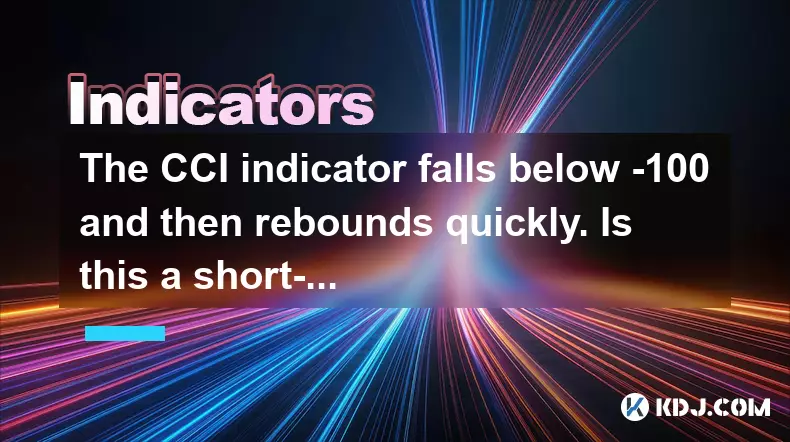
The CCI indicator falls below -100 and then rebounds quickly. Is this a short-term buy opportunity?
Sep 01,2025 at 12:18pm
Understanding the CCI Indicator in Crypto Markets1. The Commodity Channel Index (CCI) is a momentum-based oscillator widely used in cryptocurrency tra...
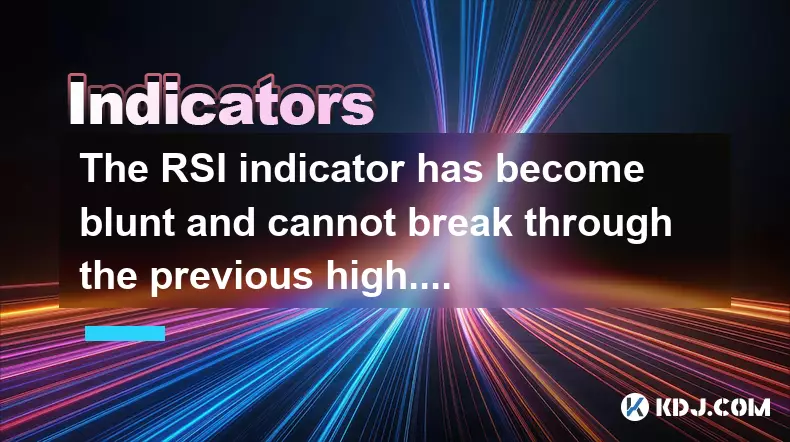
The RSI indicator has become blunt and cannot break through the previous high. Is this a signal that the rally is over?
Aug 30,2025 at 08:01pm
Understanding RSI Behavior in Extended Bull Runs1. The Relative Strength Index (RSI) is a momentum oscillator that measures the speed and change of pr...

The MACD histogram has turned from green to red, but the fast and slow lines are still below the water level. How can I interpret this?
Aug 30,2025 at 07:13am
Understanding the MACD Histogram Shift1. The MACD histogram turning from green to red indicates a weakening of downward momentum in the price trend. T...
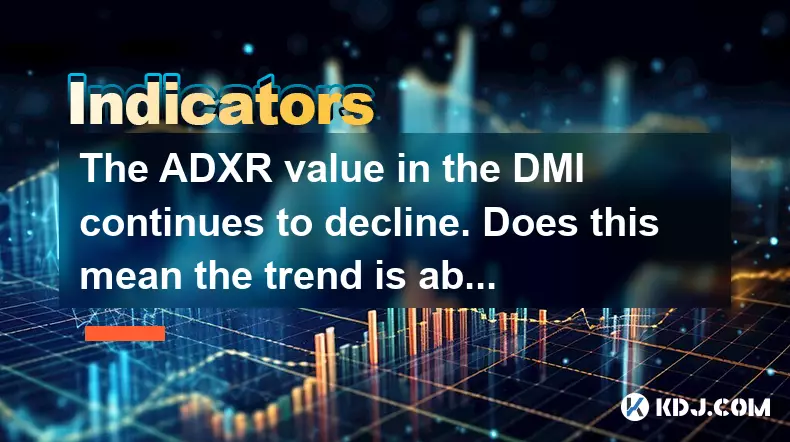
The ADXR value in the DMI continues to decline. Does this mean the trend is about to end?
Sep 01,2025 at 05:19am
Understanding ADXR and Its Role in Trend Analysis1. The Average Directional Index Rating (ADXR) is a component of the Directional Movement Index (DMI)...

The VRSI indicator has entered the overbought zone, but the price is still hitting new highs. What is the risk?
Aug 31,2025 at 07:36pm
Understanding the VRSI Indicator in Overbought Conditions1. The Volume-Weighted Relative Strength Index (VRSI) combines price momentum with trading vo...

The EMA indicator is in a bearish pattern, but the MACD has formed a bottoming divergence. How should I choose?
Aug 30,2025 at 02:19pm
Bearish EMA vs. Bullish MACD Divergence: Understanding the Conflict1. The Exponential Moving Average (EMA) is a trend-following indicator that gives m...

The CCI indicator falls below -100 and then rebounds quickly. Is this a short-term buy opportunity?
Sep 01,2025 at 12:18pm
Understanding the CCI Indicator in Crypto Markets1. The Commodity Channel Index (CCI) is a momentum-based oscillator widely used in cryptocurrency tra...

The RSI indicator has become blunt and cannot break through the previous high. Is this a signal that the rally is over?
Aug 30,2025 at 08:01pm
Understanding RSI Behavior in Extended Bull Runs1. The Relative Strength Index (RSI) is a momentum oscillator that measures the speed and change of pr...

The MACD histogram has turned from green to red, but the fast and slow lines are still below the water level. How can I interpret this?
Aug 30,2025 at 07:13am
Understanding the MACD Histogram Shift1. The MACD histogram turning from green to red indicates a weakening of downward momentum in the price trend. T...

The ADXR value in the DMI continues to decline. Does this mean the trend is about to end?
Sep 01,2025 at 05:19am
Understanding ADXR and Its Role in Trend Analysis1. The Average Directional Index Rating (ADXR) is a component of the Directional Movement Index (DMI)...
See all articles

























